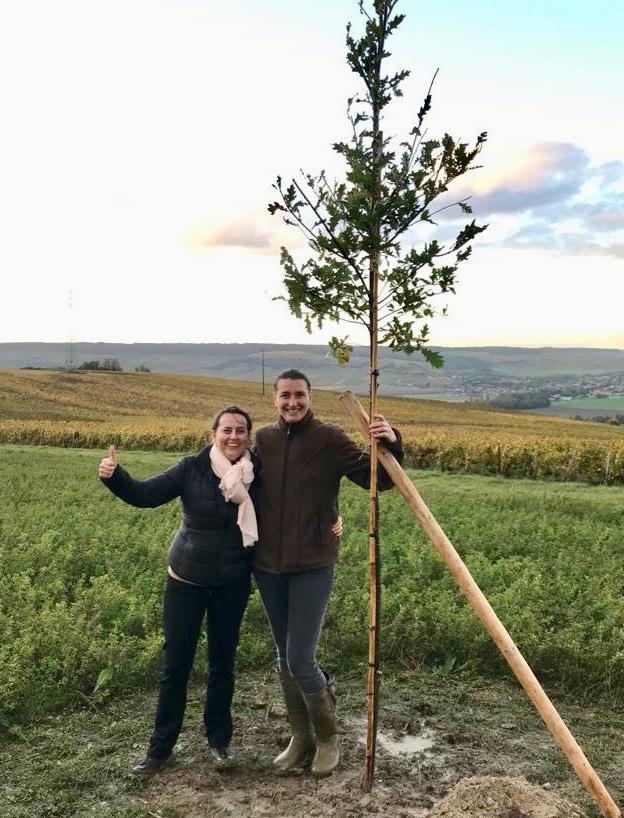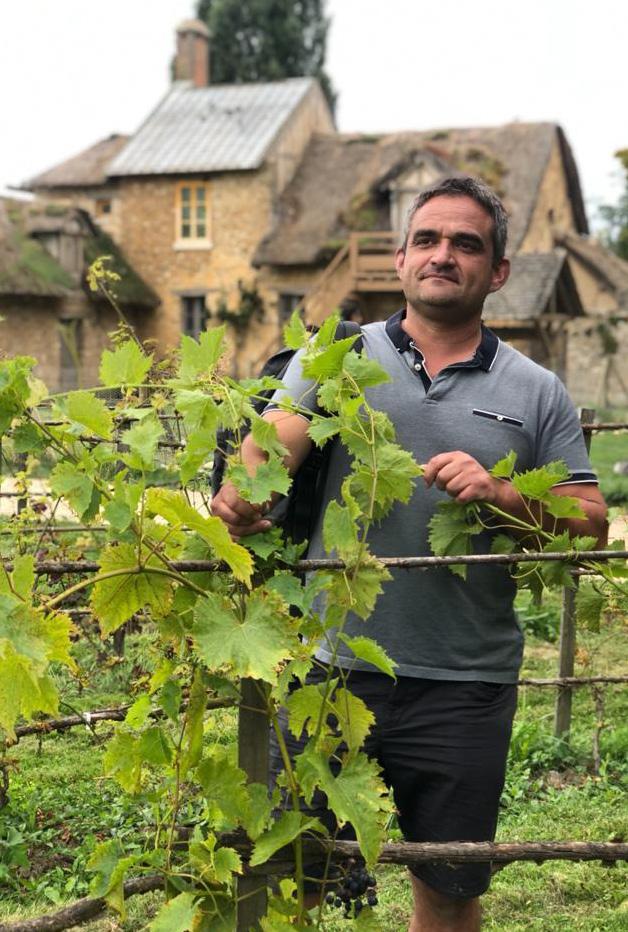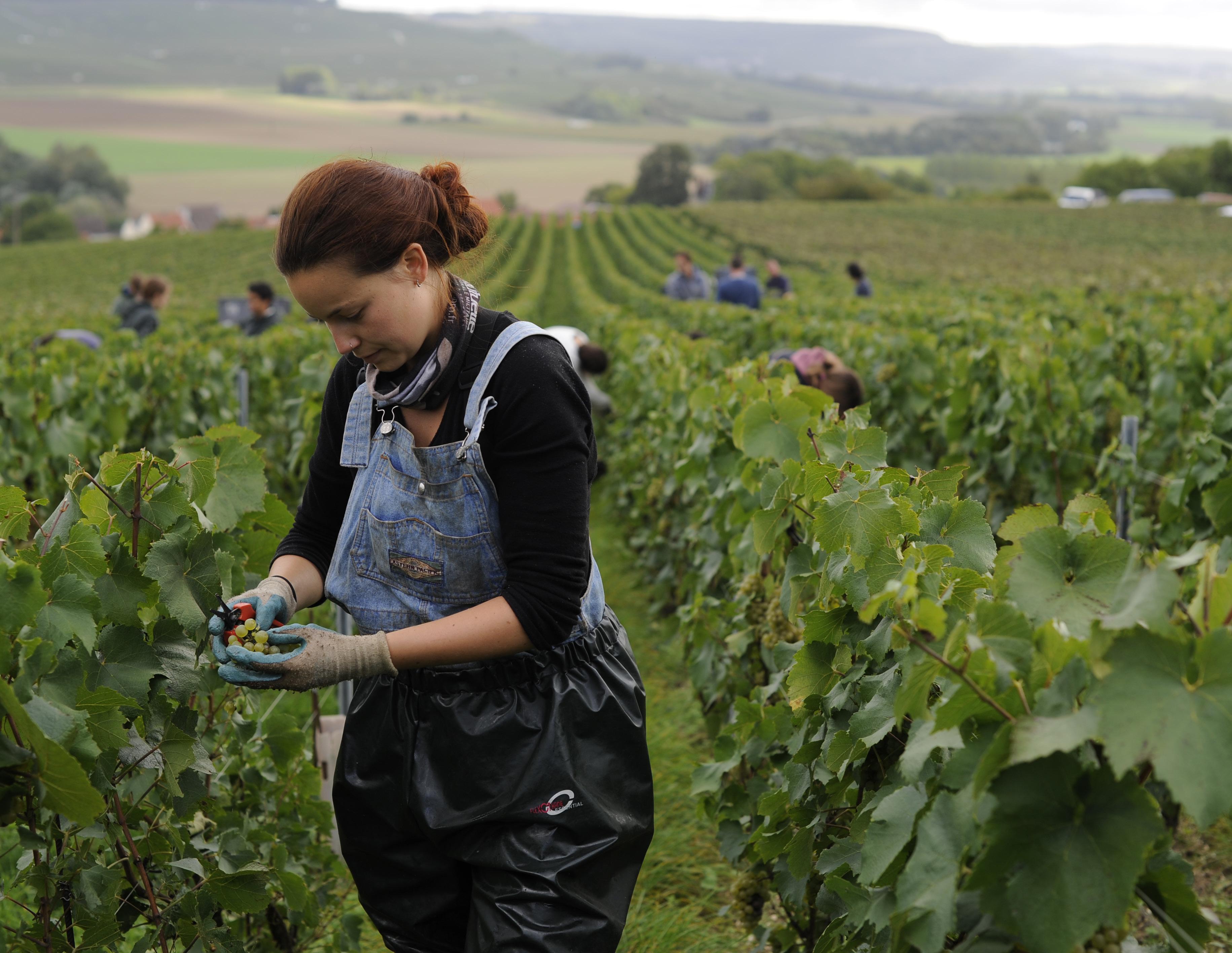
4 minute read
Making an Impact
Restoring Biodiversity One Tree at a Time
by Claire Langrée Saf
Advertisement
As the sun was setting on a cold autumn day in France, Aude and Boris Bression-Lourdeaux and I planted the first of over 1,000 trees on their 5-hectare champagne estate. Earlier in 2021, a hedge of 150 meters had been planted, as part of the estate’s continued effort to improve water retention, increase CO2 capture and reinstate a biodiverse environment.

Boris Bression Working His Estate
Global Impact From Singapore to France
From our home in Singapore, my husband and I had been looking for an investment from which we could see the results firsthand. We found the project we were looking for with Bression-Lourdeaux Champagne at their estate in the Marne Valley in France. For this project, 1,200 different trees will be planted on their plot of land to recreate the biodiverse environment it once was. While, oak trees are the main species being planted, “there will be about ten different species including hazelnut trees, as the first source of pollen for bees, lime-trees for honey and hornbeams,” says Aude Bression-Lourdeaux. There will also be a few fruit trees to feed the birds and help produce honey. This endeavor will be built, grown, and maintained entirely through manual labor, state subsidies and private sponsors.

The Project Site in Champagne
Such initiatives are starting in Southeast Asia; however, the impact measurement is still loose. France has a sustainability certification and control system in place, and carbon footprint measures are common practice. It also helps to know the vintner and his commitment to the task at hand, since the labor required to look after the recreation of a biodiverse environment is significant. These vintner initiatives are remarkable examples of a private initiative to transform a large plot of land for the good of our environment, shifting from an individual to a community focus.
Focus on Oak Trees? Here’s Why…
Traditionally, oak trees live for over 200 years and up to 1000 years. They do not get ill and their seeds survive well because they are encased in a hard shell. The leaves and acorns are covered in tannic acid which keeps them resilient and resistant to fungi and potentially harmful insects. There are hundreds of different species of oak, and they grow slowly with deep roots. An oak tree provides shade, and it does not break under extreme weather conditions.

Claire and Aude Bression-Lourdeaux With Their First Oak Tree
Wildlife
These beautiful trees produce one million acorns in their lifetime that are a high-protein food source for a variety of wildlife. Moreover, the oak tree itself acts as a habitat, providing shelter for birds and tree-dwelling critters.
Environmental Improvements
Oaks, as well as other trees, can improve environmental conditions in a landscape. Trees cast shade to cool the ground, block or diminish wind that filters through their branches and foliage and can help stabilize soil with their root systems.

Grape Harvest at Bression-Lourdeaux Champagne Estate
Additional Revenue
In addition to the tree being a truly beautiful ornament, with some luck and much care, several trees might be happy to bear some black truffles! But maybe we are drifting off in wishful thinking here.
Individual Contributions to a Healthy Planet
Not ready to invest in a larger project? Try simple changes in your lifestyle, such as shrinking your digital footprint by downloading instead of streaming and cleaning your email inbox. Each one of us can do our part, making a difference to help contain climate change and sustain our soils. As Aristotle once said, “We are what we repeatedly do."

Claire moved to Singapore in 2014, with her husband and two daughters. Here she turned to her lifelong passion and trained as a sustainability professional. She now has a local/global sustainability network. Claire runs, reads and photographs with AWA.










